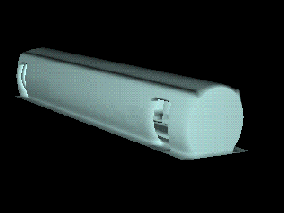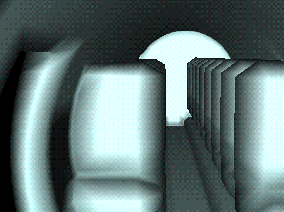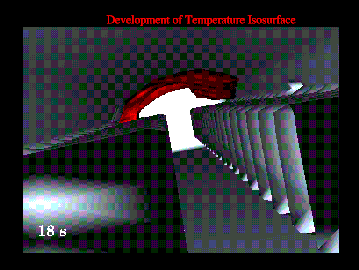AIRCRAFT FIRE FIELD MODELS
Survivable civil aircraft accidents are often accompanied by disastrous fires. In an attempt to provide insight into this problem the Fire Safety Engineering Group is developing fire field models to simulate the phenomenon.
Field models have a wide, and as yet largely untapped, scope of application within the aircraft industry. Field models with a flow domain describing the internal passenger space and the surrounding external region of the fuselage could be used to determine aircraft venting performance, both natural and forced. This would be useful for evaluating the impact of both the spread of fire hazards such as smoke, heat and toxic gases as well as determining optimal levels of ventilation performance for maximum passenger comfort. External post-crash fuel fires could be examined and their interaction with the prevailing environmental conditions and fuselage orientation determined. Once the external fire has gaining access to the internal regions of the aircraft, either through, an existing rupture, open doorway or 'burn-through', field models can be used to determine the development of the hazardous cabin fire environment. Field models also have application in the development of fire protection and fighting strategies such as the development of water mist systems for aircraft.
The FSEG are exploring all these issues using their fire field models and parallel computing techniques.



FIGURE: Numerical representation of aircraft geometry.
Reference:
E R Galea and N C Markatos. The Mathematical Modelling and Computer Simulation of Fire Development in Aircraft. Int J of Heat and Mass Transfer, Vol 34 No 1 pp 181-197 1991.
See publications #, 83, 64-62, 30, 29, 27, 25, 22, 19, 17, 16, 10.

